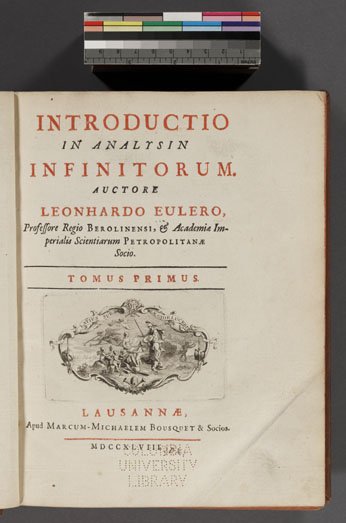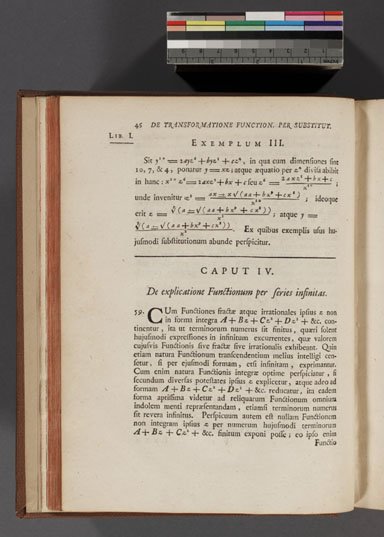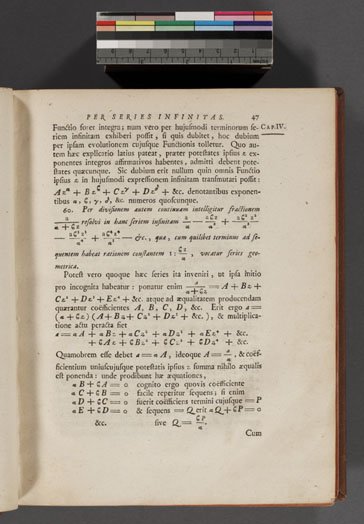- About MAA
- Membership
- MAA Publications
- Periodicals
- Blogs
- MAA Book Series
- MAA Press (an imprint of the AMS)
- MAA Notes
- MAA Reviews
- Mathematical Communication
- Information for Libraries
- Author Resources
- Advertise with MAA
- Meetings
- Competitions
- Programs
- Communities
- MAA Sections
- SIGMAA
- MAA Connect
- Students
- MAA Awards
- Awards Booklets
- Writing Awards
- Teaching Awards
- Service Awards
- Research Awards
- Lecture Awards
- Putnam Competition Individual and Team Winners
- D. E. Shaw Group AMC 8 Awards & Certificates
- Maryam Mirzakhani AMC 10 A Awards & Certificates
- Two Sigma AMC 10 B Awards & Certificates
- Jane Street AMC 12 A Awards & Certificates
- Akamai AMC 12 B Awards & Certificates
- High School Teachers
- News
You are here
Mathematical Treasures – Euler's Analysis of the Infinite

This is the title page of Leonard Euler’s Introductio in Analysin Infinitorum vol.I, published in 1748. This book is considered by some mathematical historians to be one of the most influential mathematical texts of all time. It serves as an introduction to Euler’s later series of texts on the calculus: Differential Calculus (1755) and Integral Calculus, completed in 1770. Among its many contributions the Analysis: defines “function”; presents methods of transforming and representing functions; establishes the category of even and odd functions, defines the trigonometric functions in a modern manner; presents a proof (not complete) for the Fundamental Theorem of Algebra; popularized the use of the symbol “e” for the number 2.71828 . . . and “π” for the number 3.14159 . . . and established the relationship cos θ + i sin θ = eiθ. A complete English translation of this work is available: Leonard Euler, Introduction to Analysis of the Infinite, Springer-Verlag, 1988, translated by John Blanton.

The frontispiece of Euler’s Analysis reflects the romantic era of his time and shows two women contemplating a mathematical problem while a winged muse hovers above. The engraving is entitled "Analysis of the infinitely small."

Image of page 46 of the Analysis, the beginning Chapter IV, “On the development of functions in infinite series”. Here Euler makes the argument that many functions can be simplified for computation by converting them into power series: A + Bz + Cz2 + Dz3 + . . .

This image of page 47 continues the discussion of series conversion of a function. The example of the rational function 1/(α + βz) is given. By repeated division the function is transformed into a power series and Euler then proceeds to demonstrate techniques for determining the unknown coefficients A, B, C, . . . .
Index to Mathematical Treasures
Frank J. Swetz and Victor J. Katz, "Mathematical Treasures – Euler's Analysis of the Infinite," Convergence (January 2011)




